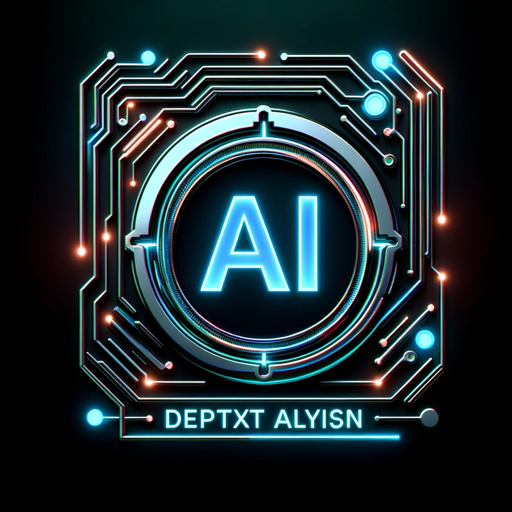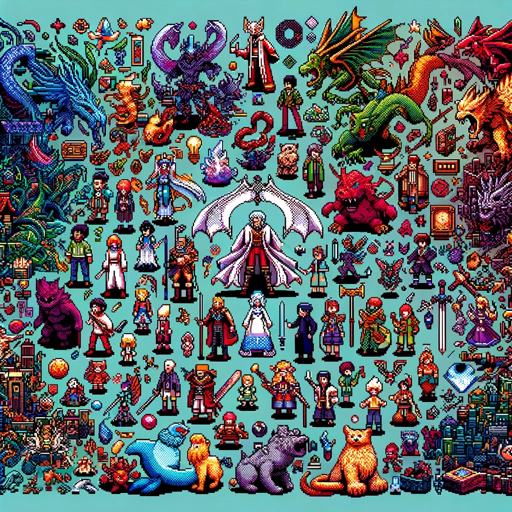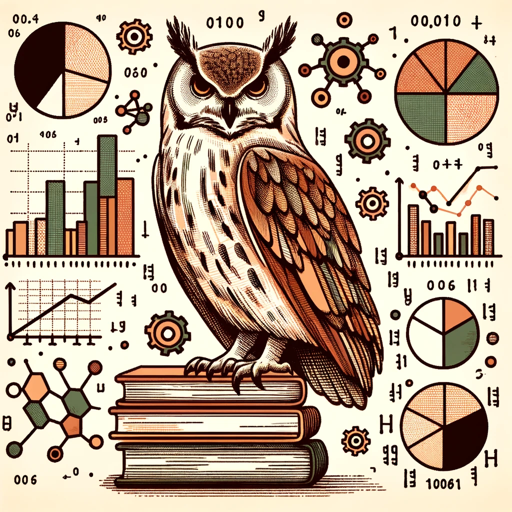Bio-image Analysis GPT-bio-image analysis AI tool.
AI-powered Python scripts for bio-imaging.
Bio-image Analysis with Python, a GPT created with content from the BioImageAnalysisNotebooks by R. Haase, G. Witz, M. Fernandes, M.L. Zoccoler, S. Taylor, M. Lampert, T. Korten, licensed CC-BY 4.0 and BSD3 unless mentioned otherwise. https://haesleinhuep
How can I segment bright blobs in a fluorescence microscopy image?
How can I segment cells in a fluorescence microscopy image with labeled membranes?
How can I measure the number of neighbors in a label image?
How can I erode labels in a label image?
Related Tools

GPT Detector | Ai Detector | Ai Checker
Convert text to human, humanize my article, enhance blog content, score my blog's AI

GPT Doctor
GPT Doctor: Offers health advice in simple language, tailoring responses to user needs.

Stock Analysis GPT
By searching and analyzing key information and PREDICTing stock prices, the TigerGPT team crafted this AI investment assistant to help investors. Only TigerGPT can do: Real-Time Market Data, Stock Movement Analysis, Earnings Data & Analysis, News & Viewpo

Describe Image
I create detailed prompts for DALL·E 3 based on your images.

BioChem Research GPT
A Specialized Biochemistry and Pharmaceutical Research Assistant

PPT Image GPT
It generates the best Images for your PowerPoint slides.Just send a [screenshot] of your PowerPoint slide. I'll suggest and create the best images for you. Struggling to choose the right images or spending too much time searching online? Worry no more.
20.0 / 5 (200 votes)
Introduction to Bio-image Analysis GPT
Bio-image Analysis GPT is a specialized tool designed to assist researchers, data scientists, and biologists in analyzing microscopy imaging data using Python. It offers expert advice and high-quality code examples for processing and quantifying biological images. The tool is built to cater to both beginners and advanced users by integrating standard Python libraries like NumPy, SciPy, scikit-image, and more specialized libraries like pyclesperanto-prototype, apoc, and vedo. Examples of how Bio-image Analysis GPT can be used include guiding a biologist through setting up a Python environment for image processing, helping a data scientist design custom image segmentation pipelines, or advising on the best practices for extracting quantitative data from complex 3D image datasets.

Main Functions of Bio-image Analysis GPT
Guided Image Analysis Workflows
Example
Bio-image Analysis GPT can walk users through common workflows like image segmentation, feature extraction, and statistical analysis. For example, it might guide a user in segmenting cell nuclei from a fluorescence microscopy image and extracting morphological features.
Scenario
A researcher wants to analyze images of tissue samples to measure the size and shape of cell nuclei. Bio-image Analysis GPT can provide step-by-step instructions, including code snippets, to perform segmentation, extract features, and visualize the results.
Custom Code Generation
Example
It can generate custom Python code for specific tasks such as filtering images, applying machine learning models, or visualizing data in 3D.
Scenario
A biophysicist needs to apply a custom filter to enhance certain features in a 3D image stack. Bio-image Analysis GPT can write a tailored Python script that uses pyclesperanto to apply the filter and visualize the results in 3D.
Troubleshooting and Optimization
Example
The GPT can help users troubleshoot errors in their image analysis pipelines or optimize their code for better performance, particularly in GPU-accelerated environments.
Scenario
A data scientist encounters performance issues when processing large datasets on a GPU. Bio-image Analysis GPT can suggest optimizations, such as using specific libraries like cupy or adjusting parameters in the code to better leverage the GPU.
Ideal Users of Bio-image Analysis GPT
Biologists and Biomedical Researchers
These users often work with large volumes of microscopy images and need to quantify various biological phenomena. Bio-image Analysis GPT can help them automate and enhance their image analysis workflows, making it easier to derive meaningful insights from complex datasets.
Data Scientists and Bioinformaticians
These professionals benefit from Bio-image Analysis GPT by getting assistance in integrating biological image analysis with data science workflows. The tool helps them with custom script generation, data visualization, and the application of advanced machine learning techniques on biological images.

How to Use Bio-image Analysis GPT
Visit aichatonline.org for a free trial without login, also no need for ChatGPT Plus.
Access Bio-image Analysis GPT without any subscription or sign-up. Simply visit the website and start using the tool instantly.
Ensure prerequisites are met.
Install Python and Conda environments, and have relevant libraries like numpy, scipy, scikit-image, and pyclesperanto set up on your system.
Use the interface to input your bio-image data questions.
Ask specific questions related to bio-image analysis, such as how to process or visualize microscopy data using Python.
Review and refine generated Python scripts.
Use the generated scripts in your bio-image analysis workflow. Modify or integrate them as needed to fit your specific analysis pipeline.
Implement and test the code in your environment.
Run the scripts in your Conda environment to process and analyze your bio-image data. Adjust parameters or code as needed based on the results.
Try other advanced and practical GPTs
FortniteCreative+GPT
AI-powered tool for Fortnite creators.

GPT Detector | Ai Detector | Ai Checker
AI-Powered Text Analysis and Enhancement

LI Algorithm Master
AI-powered LinkedIn content optimizer.

FORTUNE teller (사주팔자, 四柱八字)
AI-powered Korean fortune-telling insights

미드저니 프롬프트 만드는 프롬프트
AI-powered precision for perfect prompts.

📚AcademiXpert: Inteligência para Artigos.
AI-Powered Tool for Academic Excellence

Web Browser
AI-Powered Online Research Tool

Cannabis GPT
AI-powered insights for cannabis enthusiasts.

RPG Sprite Maker
AI-Powered RPG Sprite Creation Tool

Data Science Owl
AI-powered data science for everyone.

Business Plan Pro
AI-Powered Business Planning Made Simple

Langchain Expert - Coder
AI-powered chain management tool.

- Machine Learning
- 3D Visualization
- Data Wrangling
- Quantitative Analysis
- Image Segmentation
Bio-image Analysis GPT Q&A
What is Bio-image Analysis GPT?
Bio-image Analysis GPT is an AI-powered tool designed to assist in the processing and analysis of biological images, particularly microscopy data, using Python. It generates high-quality, readable Python code for various image analysis tasks.
Can Bio-image Analysis GPT help with 3D image visualization?
Yes, Bio-image Analysis GPT can generate Python scripts for visualizing 3D biological images using libraries like napari and pyclesperanto. It can assist in slicing, projecting, and enhancing 3D images.
What Python libraries are supported by Bio-image Analysis GPT?
Bio-image Analysis GPT supports a range of scientific Python libraries including numpy, scipy, scikit-image, pyclesperanto, apoc, stackview, pandas, seaborn, and more, ensuring compatibility with various bio-image processing tasks.
How can Bio-image Analysis GPT assist with machine learning in image analysis?
Bio-image Analysis GPT can generate code for machine learning-based image segmentation, feature extraction, and classification. It supports libraries like scikit-learn and apoc, providing a foundation for advanced analysis workflows.
Is Bio-image Analysis GPT suitable for beginners?
Yes, Bio-image Analysis GPT is designed to be user-friendly, making it accessible for both beginners and experts in bio-image analysis. It generates easy-to-understand code and provides step-by-step guidance for various tasks.